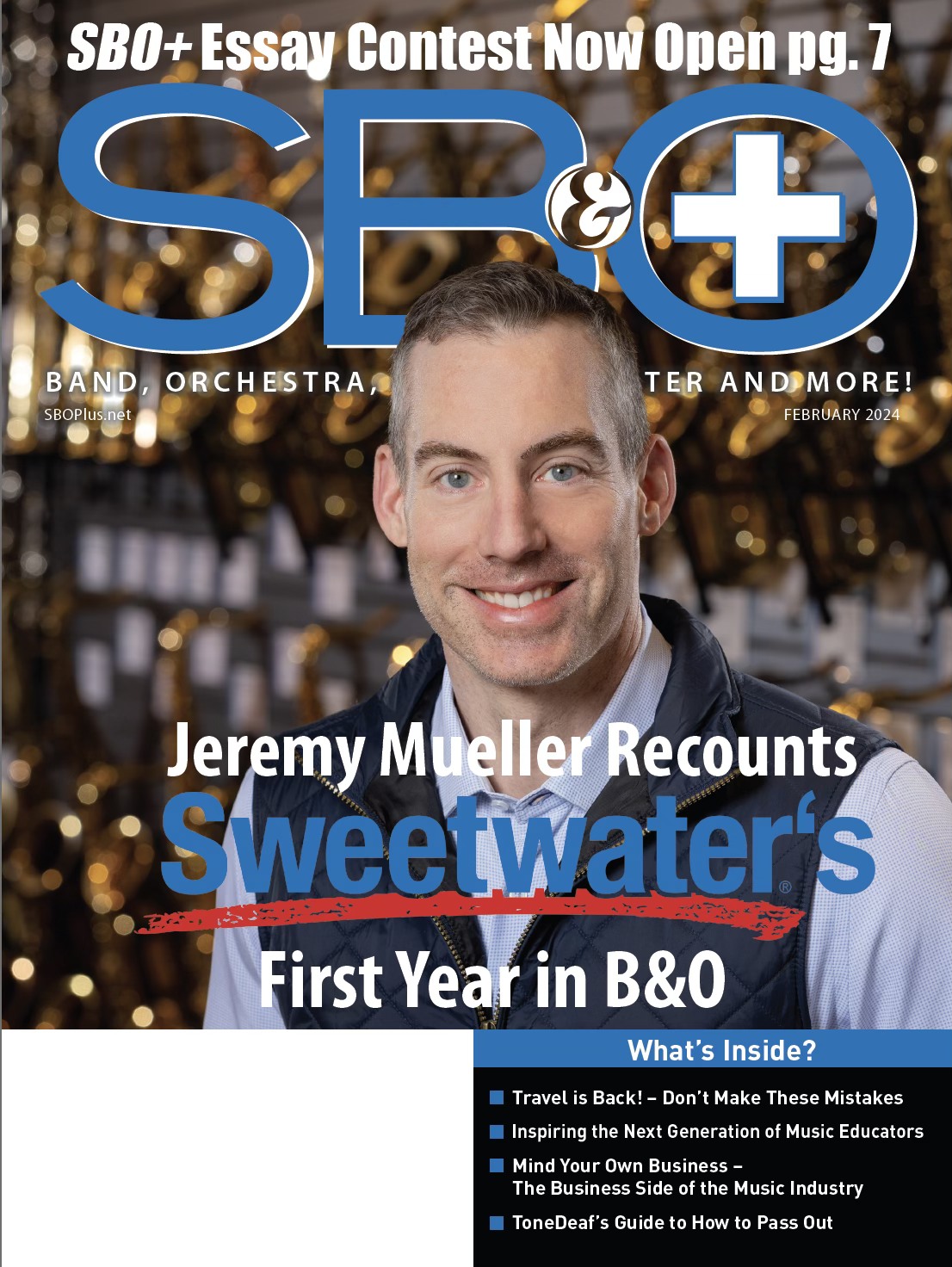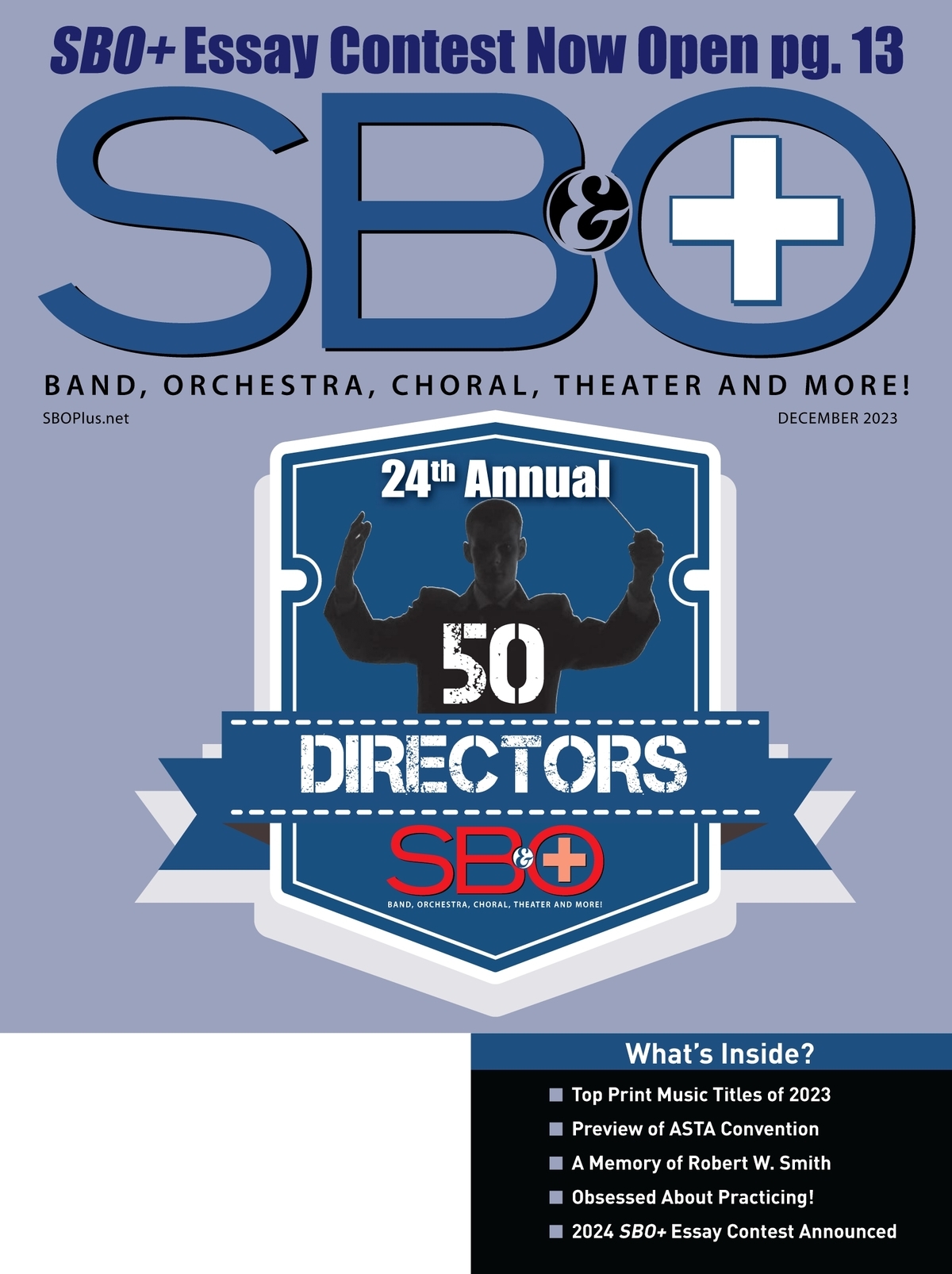EDUCATORS SUBSCRIBE FOR AS LOW AS $0.00! CLICK HERE!
-

SURVEY: DEALING WITH MUSIC DEALERS
Mike Lawson | May 1, 2003Reinforcing the fiscal crunch facing most school music programs, a national sampling of band and orchestra directors revealed that the determining factor in selecting a music supplier is competitive pricing. Eighty-six percent of those polled noted that when other factors such as service and availability of product were equal, price was the motivating factor. As Matt Doiron, music director at Sanford, Maine's high school stated," In times of tight budgets, competitive pricing is the key issue." He went on to note, "The dealer rep visiting the school is very convenient and would be the second most important factor."
Coinciding with the tight budgets, directors expressed a need for both repair and product information to determine how best to maintain existing instruments as well as purchase new equipment. The majority of directors also favored suppliers providing clinicians and, in a growing sign of the emergence of the Internet, 59 percent considered an informative Web site of high importance while 50 percent viewed the ability to make a purchase through a dealer's Internet site a priority.
Read More... -

Bruce Dinkins
Mike Lawson | May 1, 2003When Bruce Dinkins moved 3,000 miles to become band director at Bowie High School in Austin, Texas, he went with a specific plan in mind for his marching band.
” I told the students, ‘A year from now, we’re going to be in the finals at the state competition.’ And they looked at me like I was an idiot. They’d been to finals once in the school’s history,” he recalls.
After hearing Dinkins’ bold announcement, some of the students even logged on to an online chat room to discuss the new band director’s mental capacity.
“They made comments like, ‘Is he crazy? We’re not going to do that in one year.’”But the new band director proved to be a man of his word. That year, the Bowie High School Band made it to the state competition and took 11th place (out of 30 bands).
Read More... -

Learning to Rock at an Early Age
Mike Lawson | April 1, 2003The cynical could paraphrase Mark Twain and say that everybody talks about the lack of music in our schools, but nobody does anything about it. But David Wish did: he founded a national organization called Little Kids Rock. The 501(3)(c) nonprofit comes into economically disadvantaged communities and bestows hundreds of guitars on children who would otherwise not have a chance to strum and pluck.
When he started teaching at a San Francisco public school in 1992, Wish, like many of his fellow public school teachers, was shocked at how little music was being taught.
“They did hire a guy to come in for half an hour once a week,” Wish recalls. “But he was focused on nursery rhymes. I knew the students’ preference was for pop music, and their pop sensibilities were being left out in the cold.”
Read More... -

Working with a Jazz Clinician
Mike Lawson | March 1, 2003A series of visits from professional Chicago-area musicians in high school is forever emblazoned on Dave Samuels’ mind. These visits opened Samuels’ eyes and ears to the creativity and what he refers to as the empowerment of hands-on music education.
“We’d hang out with them and occasionally play with them. Those were unbelievable experiences,” recalls Samuels, now a professional jazz percussionist who performed with Spyro Gyra from 1977 to 1994.
As a clinician himself, Samuels strives to leave that same kind of indelible impression on the students he coaches.
“The thing about doing a clinic, as far as I’m concerned, is that you want to inspire them, you want to give them information, you want them to leave the clinic with something tangible that they can work with.”
Chris Vadala, a performer and the director of Jazz Studies at the University of Maryland, remembers his life-changing first encounter with a professional musician/clinician.
Read More... -

REPORT: SUMMER MUSIC CAMPS
Mike Lawson | March 1, 2003For serious music students, June may mark the beginning of summer vacation, but it does not mean their musical education takes a break. Throughout the summer, a variety of camps for marching band, jazz band, chamber ensembles, strings and orchestra, and drum line and auxiliary are conducted. Many of the camps offer ensemble settings as well as individualized instruction, and some also include recreational electives and other activities.
In this Report, School Band and Orchestra presents an alphabetical sampling of some of the numerous music camps in session this summer. For additional information about each camp, visit the Web site listed with each one.
Jamey Aebersold's Summer Jazz Workshops
Read More...
California, Kentucky, Washington
www.jajazz.com/workshops/
This workshop series teaches jazz improvisation in the styles of artists like Miles Davis, Charlie Parker, John Coltrane and more. The week-long workshops offer hands-on instruction in jazz improvisation in a small group setting. Workshops, including two-day "Anyone Can Improvise" seminars conducted by Jamey Aebersold, are being held at the University of Louisville, Kentucky, Pleasant Hill, Calif., and Seattle, Wash. -

Marcus Tsutakawa
Mike Lawson | January 1, 2003A performance tour through parts of Europe. Joint concerts with Japanese ensembles at home and overseas. A clinic with faculty from the Central Conservatory in Beijing, China. These are a few of the experiences orchestra members at Garfield High School (Seattle, Wash.) have been offered in recent years.
In 1985, director Marcus Tsutakawa took over Garfield's then-waning orchestra program and, over the years, has rebuilt it from a handful of players to three ensembles totaling 145 students, this year.
Read More... -

Percussion Methods for the Non-percussionist Teacher
Mike Lawson | November 1, 2002Reprinted with permission from Hal Leonard Corporation. The exercises presented are excerpted from “Essential Elements 2000″ percussion book series by Willis M. Rapp. All of these exercises appear in “Essential Elements 2000 Percussion Book 2,” except for exercise 10, which appears in “Essential Elements 2000 Keyboard Percussion Book 2,” also by Rapp.
This article addresses performance issues associated with the snare drum, cymbals, triangle, tambourine and keyboard instruments. It is designed to help music educators guide their students through the challenges of performing on these instruments.
Read More... -

Interactive Percussion Programs
Mike Lawson | November 1, 2002Rhythm can strike a person where sometimes words and pictures fail. Like the pulse of the heart, that thump on the skin of a drum pulsates through the body’s senses, which can stimulate the brain. Of course, stimulating the brain is what all good teachers are looking to help their students do.
And virtually anyone can whack a drum. Because it’s so accessible, so fun, and so easy, kids respond quickly to it. They pay attention. They focus. It is one of the reasons that percussion programs seem to have struck a chord in the classroom over the last 10 years. And a variety of programs, to fit many circumstances, are available virtually everywhere.
“The reason percussion works so well is that it captures everyone’s imagination,” says Ruth Cahn, chair of the education committee for the Percussive Arts Society (PAS). “Everyone wants to do it. When a violinist plays, you see them and think that’s wonderful, but you don’t necessarily want to try it. You see a drum and you want to hit it.”
Read More... -

U.S. Navy Music Program
Mike Lawson | September 1, 2002The U.S. Navy is looking for a few good musicians. With six 45-piece “large fleet” bands and two 35-piece “small fleet” bands stationed throughout the United States, as well as three overseas bands, the Navy Music Program is constantly seeking the nation’s finest wind, brass and percussion players to serve the country through music. Like the Army, Air Force and Marines, the Navy fields its own ensembles to perform at military functions and special events. But, according to Gary Seitz, director of recruiting for the Navy Music Program, the Navy ensembles differ from those of the other military branches in that their primary mission is music.
“In the Navy Music Program, you don’t do anything but music,” he explains. “In the Marine Corps and the Army, the musicians are soldiers first. They hit the fox holes and the music is secondary. But in the Navy Music Program, we do music, period.”
The musicians in the Navy bands function as a wind ensemble and marching band, and many players are also involved in smaller groups, such as a woodwind quintet, a rock band or a Big Band.
Read More... -

Report: Marching Snare Drums
Mike Lawson | August 1, 2002One of the most important pieces of a marching band is the percussion section. Without the drums to set the pace and keep the beat, the rest of the band would be out of time and out of step. For this Report, SBO is focusing on the all-important marching snare drum. Which model is best for your marching band? Here is an alphabetical sampling of companies offering marching snare drums.
DEG Music Products
www.degmusic.comThe Dynasty USA top and bottom head/pipe band snare drum is used by the Blue Devils, Boston Crusaders, Magic of Orlando, Hawthorne Caballeros, Syracuse Brigadiers and San Francisco Renegades, among others. The Wedge Snare Drum is used for indoor/outdoor playing and features a lightweight design. Drums feature Dynasty Erudite hoops, which increase the durability of the drums. Standard finishes are red, white, black and blue.
Read More... -

50 Steps to a Better Marching Band
Mike Lawson | August 1, 2002As those associated with the marching band activity know, it's quite a task to coordinate music, movement and auxiliary work into a unified field presentation. With band camp fast approaching, I began to focus on the many tips and techniques I've picked up as a student, director and adjudicator to make that job go a little more smoothly. Here are some ideas I've accumulated over the years that I will be using this fall with the Duquesne University "Pride Of Duquesne" Marching Band, located in Pittsburgh, Penn. Our students come from a wide variety of band programs - from highly competitive to "parade only" situations. These points have been helpful in unifying these students into a common style. Hopefully you will find some of these points useful, and add them to your teaching "bag of tricks."
Read More... -

UPFRONT: EXCITING FIELD SHOWS FOR SMALL BANDS
Mike Lawson | May 1, 2002Designing a show for a small band requires special techniques to create the excitement of a large band show. For a group with 30 to 48 winds, plus percussion and auxiliary, the designer must select quality music and create as much visual excitement as possible. Also, because of the number of winds, the instruments must […] Read More...





